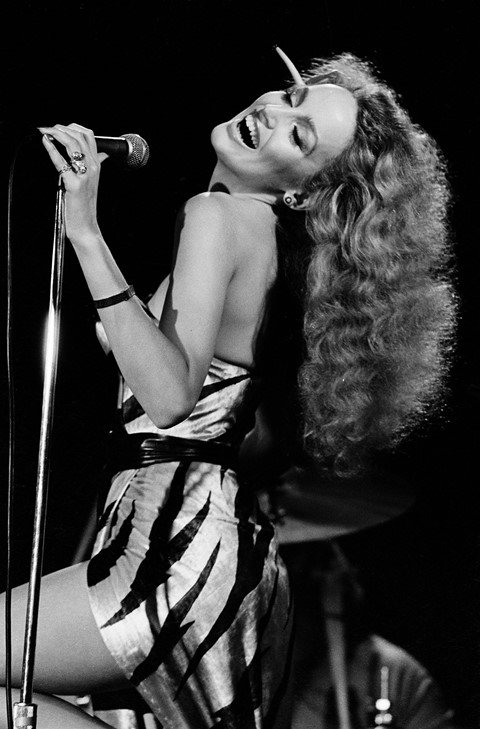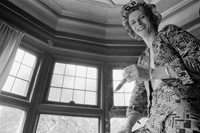Michael Putland has turned his lens on music’s most extraordinary stars – here, he tells us the story behind some of his most memorable shots
Michael Putland had decided to quit photography because he “couldn’t get any work” when he was sent on an assignment for a music magazine to photograph Mick Jagger. Having left school at 16 (“got more or less kicked out I think, I wasn’t very academic”) to pursue image-making, it took time offering photographs he’d taken at concerts to music magazines like Melody Maker and NME before he was given “an actual assignment”, and shooting Jagger was the beginning of his now 50-year long career in photography. “Once I started working for one magazine, the record companies started to know me and the press offices got to know me and the artists got to know me,” he says. “And that’s how it built. I’m very lucky.”
A new exhibition at Amsterdam’s Gallery Vassie entitled It’s Been a Fantastic Ride… is a survey of Putland’s extraordinary photographs of music industry legends. The Rolling Stones, Bob Marley, Bryan Ferry, Patti Smith and Debbie Harry have all stepped in front of his lens – among many other legendary names – the former having invited Putland along on tour with them in 1973. “The thing about being on tour is it was so different in those days because it was film obviously not digital,” the photographer remembers. “So, for instance, on the first night of the Stones tour which was in Vienna, I did the shoot at the concert, did a press shoot before with Mick, and then the next morning I’m on a plane back to London. I go straight to the studio and process the film. You then make prints, you wash them and all the things you have to do. Then you get in your car and hand deliver them to all the magazines. And then you get back in your car and go to the airport and fly to the third night.”
Putland’s images are characterised by a sense of spontaneity: whether Leonard Cohen laughing, cigarette in hand, in a hotel room, David Bowie mid-song on stage or a topless Mick Jagger raising an arm to thousands of adoring fans, it’s clear that he is an expert in capturing the pinnacle moment. There is a warmth to the image-maker’s black and white shots (though he does work in digital, Putland says that his “big love is black and white film”) emphasised by the beaming smiles that many of his subjects offer. Here, he talks us through a few of the serendipitous tales behind some of the images in his immense oeuvre.
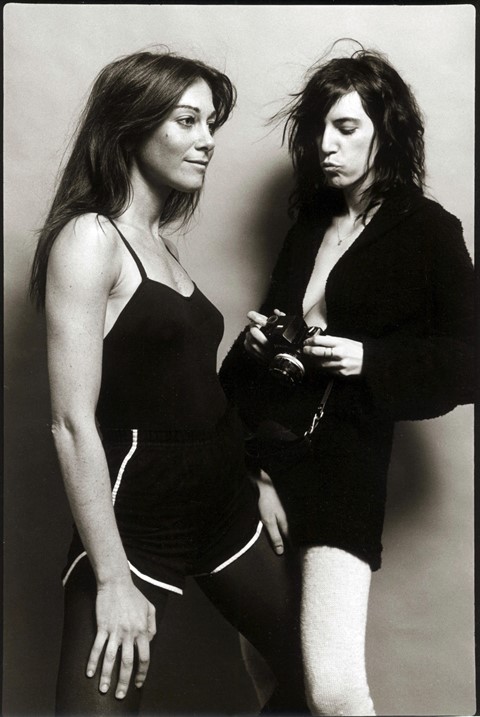
Patti Smith and Lynn Goldsmith, 1977
“There was a magazine in New York, what was it called? I think it was Gig Magazine. Anyway, Lynn, the woman in the picture, is a very well-known photographer in America. Another rock and roll photographer. The wanted me to go and photograph five or six rock photographers in New York for some kind of piece and show their archive, and Lynn was one of them. And so she said ‘come on over, I might be shooting’. I get there and she was shooting Patti Smith in her lovely little studio right off Fifth Avenue. Very up market. So I arrive and I’ve never met Patti before and she was great, she was really really sweet. And she said, ‘why don’t you photograph me photographing Lynn?’ Which I did. I did some shots of Lynn and I did some of Patti. And then Patti took pictures of me. It was the only time I shot her really apart from on stage. It was just one of those fun things. For the exhibition I was looking through pictures and I suddenly realised there were three of us in the room and here’s pictures of Lynn and I, and Patti must have taken them. It was a long time ago so it’s difficult to remember but obviously she was using my camera or Lynn’s camera – it must have been mine – in the pictures. That’s really the story and Lynn, as you can tell, was very glamourous, very beautiful New Yorker, and it’s just a great picture isn’t it?”
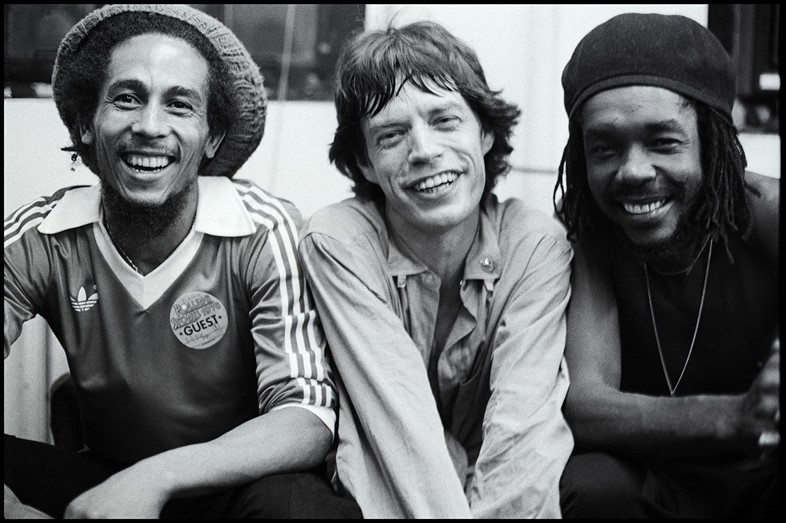
Bob Marley, Mick Jagger and Peter Tosh, 1978
“The Stones were playing a gig at a theatre in New York, a small theatre. It was the first tour where they were filling stadiums where they played to 90,000 people. They were just making that change to be 90,000 people instead of 12. But this was probably 2,000 people. After the gig I had to go back to the dressing room and there were hundreds of people. There were probably a 100 people all on this stairwell – it was a small theatre – outside this terribly tiny dressing room and I couldn’t get in there, I just didn’t want to fight through the bodies. I was turning around to go and the publicist said ‘no come in, come in’ so I go in. Mick’s just come off stage, and in that room were Paul and Linda McCartney, Bob Marley, Peter Tosh and all The Rolling Stones. It was about the size of a handkerchief, this place. Mick had just come off stage and Bob Marley and Peter Tosh were sitting – there were only a couple of sofas there and they were sitting on one. And Mick, he had worked so hard, he was tired, drained, and he got a beer and then he had nowhere to sit! So Bob and Pete moved slightly to one side, Mick squeezed in, and I just happened to be there with my camera and they all gave me such a lovely smile. Just a picture made in heaven.”
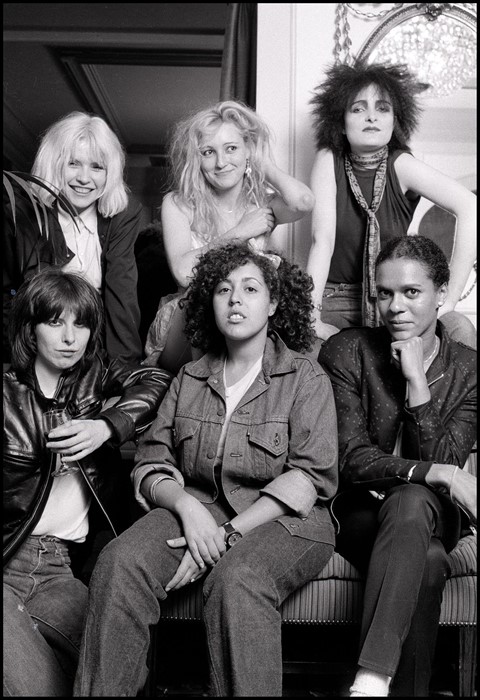
Ladies Tea Party, 1980
“There was a journalist strike in London. I think it was IPC, the publishing company. They used to have a lot of the music magazines. So all the journalists went off and somebody put money into starting a new magazine, which was called New Music News. Somebody came up with the idea of having six important pop stars – if that’s the right term – to come and have tea at the Royal Garden Hotel. So I get there. For some reason I think the shoot was at 2.30, for afternoon tea at 4. So Blondie turns up, who was the biggest star at the time, right on the button – 2.30 she’s there, professional, with Chris Stein, the other guy in Blondie. And then all the others came in direct reverse order of their fame. I think it was lovely Viv Albertine from the Slits who arrived two and a half hours later. And they just did this really sweet photograph for me. And then they all went and had tea. You know, two people have tried to get funding to recreate that afternoon and make a film documentary on it, and they’ve both asked if I would do the photographs again. Poly Styrene, who’s sitting in the front row, her daughter was prepared to sit in for her mother, who’s obviously no longer with us. So it still would have been a sweet picture, but neither of them could get funding. Apparently Debbie Harry was like ‘yeah count me in. I’ll be there. I’ll do it.’”
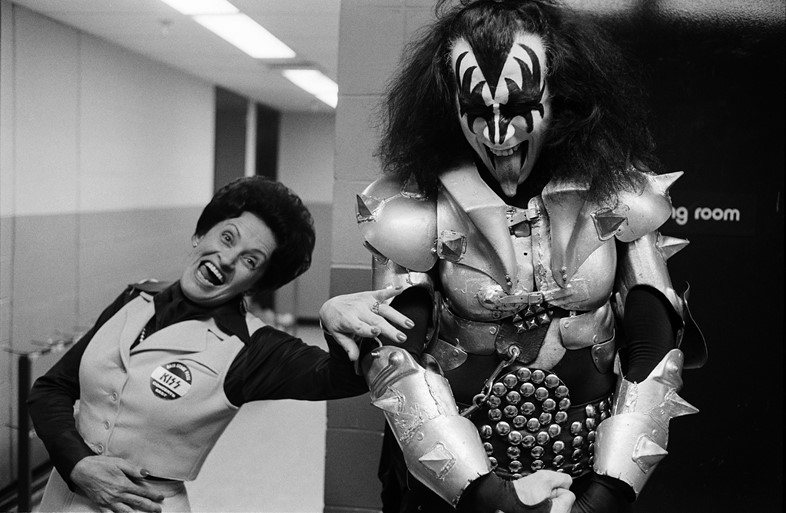
Gene Simmons of Kiss with a lady from hospitality, 1977
“I suppose you have to hear a little bit about Kiss. Obviously they wore the face paint and everything – they were all about seven foot tall with their shoes, it was hysterical. Just regular guys actually, but obviously they had developed this persona. So I’m doing this picture outside the dressing room with Gene Simmons, and he was sticking out that extraordinarily long tongue – which is almost like a logo for them. He’s sort of sitting there, pulling these grotesque faces and this extraordinary woman who was part of the catering staff just came – it was no talent of mine whatsoever – she came waltzing down that hallway behind. And she photobombed! It was just one shot. She just went in and stuck her tongue out as well. The funniest, funniest thing. She must have been twice his age, I think. It just wasn’t premeditated. He was very amused, he thought it was hysterical.”
Michael Putland: It’s Been a Fantastic Ride... runs at Gallery Vassie, Amsterdam, until April 21, 2018.
